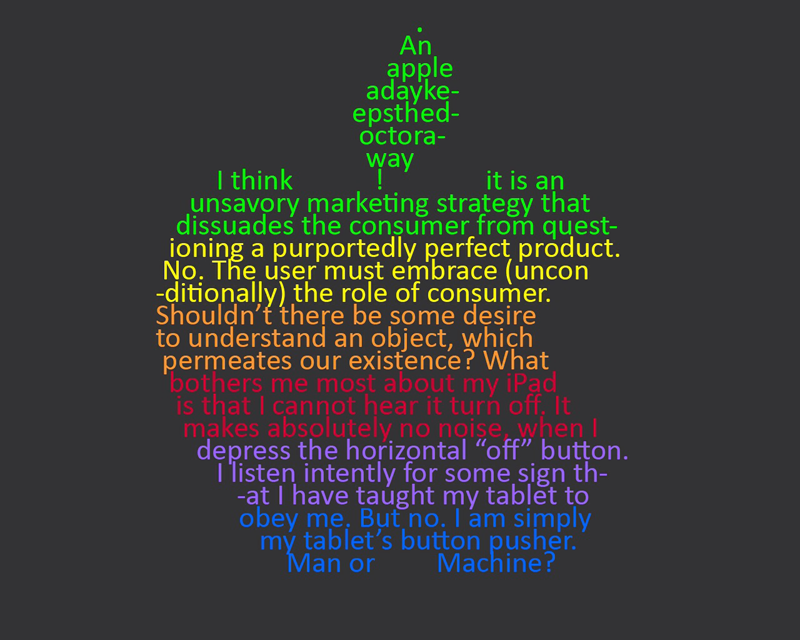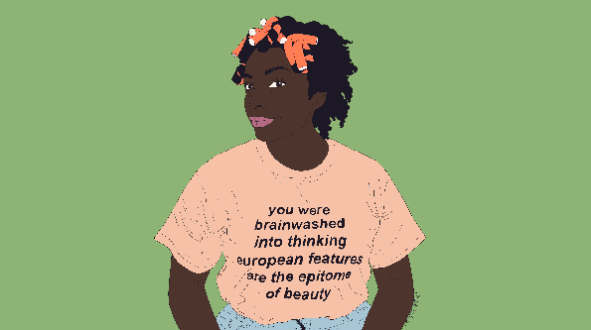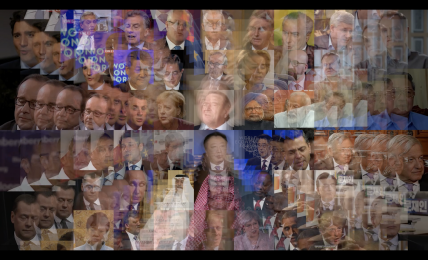The music industry is dying. At least, this is the common expression among music businessmen. The availability of music for cheap prices and the abundance of illegal downloading have effectively crippled traditional music sales. While it’s true that the Internet has dramatically debilitated the traditional institutions that dominated the music industry, the Internet is actually aiding music as a cultural institution by transforming it from its flawed past to a brand new structure.
Record companies dominate the traditional music industry. Warner Music Group, Universal Music Group, Sony Music Group, and others were established as a result of sole proprietorships that were known as talent agencies in the 1950’s and 1960’s.[i] These institutions were mostly small, independently created labeling companies run by entrepreneurs who would discover talent, create records and promote the performer’s live shows. Since these proprietorships were small in size, if an artist or group produced an album that did not sell well, the labeling companies would be forced to keep promoting their artist because other clients were harder to find due to competition among labels.[ii] Over the past half-century, a few of these labels were either incorporated or purchased by other corporations, effectively placing a few corporate monoliths as the dominating forces in music promotion.[iii] The corporations borrowed bank notes in order to pay for these entrepreneurial institutions, but they later found themselves in loaning debt from all of the sole proprietorships they had bought.[iv] To cut expenses, they began firing the talent agents and entrepreneurs who had started the companies to begin with.[v] Eventually, the only people in charge of discovering and promoting talent were the large incorporated record companies.
These record corporations dominated almost every aspect of music production. In order for an artist to become successful, they would need to sign a contract with one of these companies. These are commonly known as ‘record deals,’ and without the promotion value of one of these corporations a group would have very little chance of achieving widespread popularity for themselves. Thus, the record corporations became the arbiters of taste for the music scene. In fact, they even had direct control over what songs are played on public radio stations, so the only music that was being exposed to the masses was from signed artists.[vi] If a company did not like the way an artist sounded, they were not re-signed. If they did like their sound, a record contract would be negotiated. A new performer has relatively little bargaining leverage over the companies; hence the first contract that is signed is monetarily unfavorable for the performer. The most common form of contract would include an upfront payment for the artist that the company would write off as either investment capital or risk capital. Sums of money as large as $100 million have been given to famous artists to write and sell a set number of albums.[vii] These albums are then produced, promoted, and sold to the public.
The Internet revolution over the past decade and a half has forced this system to undergo massive structural changes to keep up with technology and culture. At first, file-sharing websites were thought of as relatively harmless to corporate intangible assets like copyrights. Then in 1999 the introduction of Napster brought the concept of acquiring music for free using file-sharing websites to the masses.[ix] Suddenly, copyright laws were being violated on a massive scale and Napster was forced to shut down within 18 months of its release.9 What the corporate institutions failed to do was aptly prepare a website or service that would provide music available to purchase online. Napster was simply providing a convenient service that the music industry had not thought of yet. This is an example of systemic failure on the part of the record companies: not only did they fail to see sites like Napster as potential threats, they also failed to adapt to the changes in mainstream technological culture. If they valued copyright laws enough to protect them adequately, they would have increased the monetary security on Internet sales before file-sharing websites became popular.
These efforts to salvage the situation are doing more harm than good for the record companies. Not only have their efforts to keep piracy at a minimum failed, they are also loosing potential clients with their 360º contract model.[xiv] It is difficult enough for an artist to hand over all of the rights to their original work to the record companies; now that they are demanding more from their clients, though, the idea of a record deal is becoming less and less desirable. This model for a contract has been deemed “unconscionable” by lawyers like Jay Cooper and Ian Brereton who defends artist’s rights against exploitation.[xv] While it is understandable that lawyers would reprimand companies for exploiting performers, the existence of these kinds of contracts exemplifies just how much companies are willing to exploit their clients under stressed circumstances. The music industry has been described as the only industry “where if you pay off the mortgage, the bank still owns the house.”15 I think this is a fitting description when discussing the 360º deals because even if the performers are able to pay off the debt from underselling their album, the record companies still own the royalties to the music and are only contractually obligated to supply the performers with a minimal amount of income. Since the old structure of the record company’s promotional tools are no longer desirable to performers, musicians have now found new ways of promoting their work which has dramatically restructured the music industry.
While there are many successful performers still signed by record companies, the newest trend for musicians is to skip the record company altogether. New technology and freelance studios have made it much easier and more affordable to record and produce music without ever needing to go to a professional studio. The Internet has allowed performers to make their work just as available as the music of the most successful musicians. Since it has become simple to get music published, a wave of new performers and new styles of music has become available to the public. On the social media website MySpace, there are reportedly nearly eight million performers and bands promoting and selling their original music.[xvi] This makes it difficult for performers to become noticed in the mainstream, but a select few have uncovered popularity and all the success that follow.
An example of this new structure’s success can be seen in Gotye’s song “Somebody That I Used To Know.” Wouter De Backer, formally known as Gotye, is a Belgian-Australian who used his own equipment to record an album in his parent’s barn in Merrick, Australia.[xvii] Having already established a small network of fans through performances and previous albums, this new album already had a moderately sized audience from the start. His hit single, “Somebody That I Used To Know,” caught people’s attention and was shared through social media outlets around the world. It topped the single charts for three weeks in more than five countries and has become the most successful single to ever come out of Australia.17 Gotye never affiliated with a record company and he owns all of the royalties as a result. With this one song Gotye has earned more money than the entire album would have made with a traditional record deal.
This new form of production and marketing bewilders record companies. Most of the endorsed popular music stars are signed with major record companies and are tailored to fit the eyes of the public. Rather than developing talent over a long-term basis, record companies often sign and produce musicians as cultural sensations that are either provocative enough or appealing enough to provoke public reaction.6 When artists like Adele, who does not dance and wears fairly conservative clothing during performances, gain worldwide popularity, those sensations are turned into wasted efforts. Raw talent has now become a qualification for popularity in the new music culture, and the traditional structure has no method of keeping up with it.
Gotye’s success illustrates how the system has been restructured completely. The ability to independently produce, promote, and sell music has made record companies less of a necessity and more of an alternative method for producing music. The important concept to remember is that the record companies do not represent the entire music industry. While record sales may drop and radio’s influence declines, other aspects of the music industry are seeing newfound popularity and profitability. Concert attendance has never been higher as music festivals like Lollapalooza and Bonaroo have found with their enthusiastic audiences of more than 100,000 attendees. Recently these festivals have been broadcasted live on the Internet to increase the potential attendance for future festivals. As concert revenue increases, merchandising and ticket sales revenue increases for the artists.[xviii] These concerts also act as promotional platforms for new artists that have yet to be discovered by the masses. As one sector of the music industry stumbles, other areas are built up and expanded.
All of these new trends in the music industry are a result of the Internet. The ability to not only download but share and promote music to anyone dramatically changes how performers go about pursuing their careers. While there may be lost revenue in royalties, additional revenue is gained by exposing music to a much broader audience. The Internet has effectively caused the slow but consistent collapse of the traditional record company dominance over the industry. Without these companies, the debt they impose on their signed performers vanishes with them. The 360º contract model demonstrates just how much the record companies exploit the performers and how detrimental the old system really was for the music industry. Performers now have the ability to earn more money even when they sell fewer albums because with the independent publishing options, they own all of the royalties and earn all of the revenue rather than a marginal percentage. The music industry may be headed in a new direction, one in which the performers hold dominance over the industry rather than record companies.
- A TED Talk revolving around a new way to build relationships between artists and fans.
- Nine Inch Nails frontman Trent Reznor discusses the “value” of his (and other artist’s) music.
- A link to a free copy of Lawrence Lessig’s famous book titled “Free Culture [link no longer active].” He argues that “short-sighted interests blind to the long-term damage they’re inflicting are poisoning the ecosystem that fosters innovation.”
[i] Steve Chapple and Reebee Garofalo, Rock ‘n’ Roll Is Here to Pay: The History and Politics of the Music Industry (Chicago: Nelson-Hall, 1978), 46.
[ii] Steve Chapple and Reebee Garofalo, Rock ‘n’ Roll Is Here to Pay: The History and Politics of the Music Industry (Chicago: Nelson-Hall, 1978), 50.
[iii] Jay M. Cooper, “Right of Recording Company to Enjoin an Artist from Recording for Others,” Loyola of Los Angeles Entertainment Law Journal 3 (1983): 83.
[iv] Jay M. Cooper, “Right of Recording Company to Enjoin an Artist from Recording for Others,” Loyola of Los Angeles Entertainment Law Journal 3 (1983): 83.
[v] Jay M. Cooper, “Right of Recording Company to Enjoin an Artist from Recording for Others,” Loyola of Los Angeles Entertainment Law Journal 3 (1983): 84.
[vi] Mark J. Percival, “Music Radio and the Record Industry: Songs, Sounds, and Power.” Popular Music and Society 34.4 (2011): 460.
[vii] “EMI Drops Mariah Carey,” BBC News, www.BBC.com, 23 Jan. 2002 (accessed 25 Apr. 2012).
[viii] “EMI Drops Mariah Carey,” BBC News, www.BBC.com, 23 Jan. 2002 (accessed 25 Apr. 2012).
[ix] Dan Simon, “Internet Pioneer Sean Parker: ‘I’m Blazing a New Path,'” CNN, www.CNN.com, 27 Sept. 2011 (accessed 25 Apr. 2012).
[x] Nicole Scott, “Apple Introduces ITunes — World’s Best and Easiest To Use Jukebox Software,” Apple.com. Internet Archive Wayback Machine, 09 Jan. 2001.
[xi] Jordi McKenzie, “Illegal Music Downloading And Its Impact On Legitimate Sales: Australian Empirical Evidence,” Australian Economic Papers 48.4 (2009): 296.
[xii] Ian Brereton, “Beginning of a New Age: The Unconscionability of the 360-Degree Deal,” Cardozo Arts & Ent 27 (2010): 182.
[xiii] Ian Brereton, “Beginning of a New Age: The Unconscionability of the 360-Degree Deal,” Cardozo Arts & Ent 27 (2010): 177.
[xiv] Owen Gibson, “Music Industry failing to Halt Illegal Downloads, Poll Finds,” The Guardian, Guardian News and Media, 20 Dec. 2005 (accessed 25 Apr. 2012).
[xv] Ian Brereton, “Beginning of a New Age: The Unconscionability of the 360-Degree Deal,” Cardozo Arts & Ent 27 (2010): 167.
[xvi] Patricia Sellers, “MySpace Cowboys,” CNNMoney, Cable News Network, 29 Aug. 2006 (accessed 25 Apr. 2012).
[xvii] “Gotye Gets Right to the Top with US Billboard Number One,” Sydney Morning Herald, Brisbane Times, 18 Apr. 2012 (accessed 25 Apr. 2012).
[xviii] S. Karlsen and S. Brandstrom, “Exploring the Music Festival as a Music Educational Project,” International Journal of Music Education 26.4 (2008): 365.



